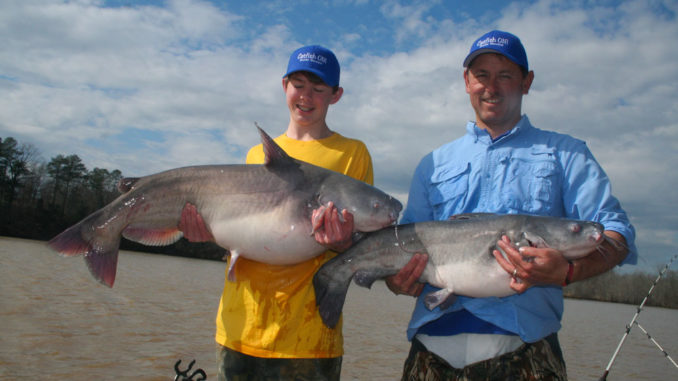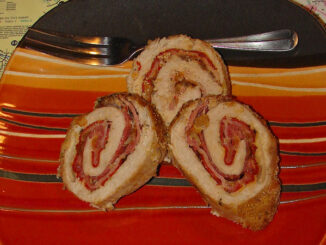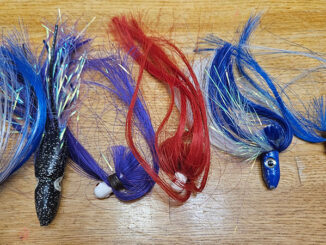
As catfish head to the spawn, change your tactics to fill your cooler
Guide Rodger Taylor of Rock Hill, S.C., said that catching blue catfish on Lake Wylie this month can be great. But you need to be flexible.
“Early May and late May often require two different approaches,” he said. “I like to fish early in the month, just as I do for prespawn cats in April. Prespawn fish are known to travel great distances toward the headwaters in southeastern reservoirs, so I like to use a prespawn approach to locating blues in early May.”
Because of the spawn, May is a transition month, and as far as locations and techniques apply, the timing varies from year to year due to multiple factors, including temperature, rainfall, length of day and other influences, he said.
Early May
“My No. 1 technique in early May and for prespawn blues is anchoring on channel ledges, sloping points and shallow backwaters. Basically you are fishing areas where a large number of fish are located in a smaller area. That lends well to anchor fishing,” said Taylor (803-328-9587).
Early in May, prime locations include the upper, riverine section of Lake Wylie upstream from the confluence of the South Fork and Catawba rivers. Prime baits include gizzard shad, blueback herring, white perch and bluegill in that order of preference, he said.
“In early May, I prefer to use gizzard shad when bottom-fishing for prespawn blue catfish,” he said. “Prespawn fishing begins usually in late March when fish are still feeding heavily on winter shad. Blueback herring and large threadfin shad are very good substitutes when gizzard shad are unavailable or hard to get.”
Late May
Taylor can tell when the blue catfish begin spawning when the number of fish he catches drops. He changes his approach to maintain good catch rates.
“I like to start fishing early in the morning in the river section,” he said. “While the winds are light, I like to anchor up. Sometimes, this will produce a flathead or two and maybe a couple of late prespawn blue cats.
“By mid-morning, winds start to pick up, and the increased sun makes nabbing a flathead less likely, (so) drifting is a better option. Drift-fishing allows for covering large areas where post-spawn and prespawn fish are in transition and are more widely scattered out. I like to drift-fish the wider areas of the lake below the river confluence looking for transitional catfish.”
Once the water warms in the spawning range, Taylor said top baits through July include gizzard shad, white perch and bluegill.
“Gizzard shad is a great catfish bait year-round but from late May through the warm-water period (through November), it is always a good idea to carry more than one kind of bait if possible.”



